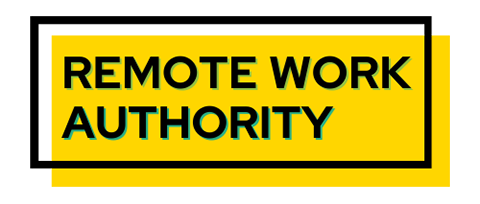Remote workers and other Internet users face a barrage of posts and stories that raise their consciousness or pull on their heartstrings. Many are moved to post a reaction even when their commitment to the cause is superficial. This digital support for causes or slacktivism can be detrimental to individuals while being helpful to the cause.
Wildfires in California. War in Ukraine. Bombing in Gaza. School shootings in Louisiana, Tennessee, and many states throughout the country. Headlines about tragic events, significant environmental, political, and social concerns, and stories of animal abuse and difficult personal circumstances flood email and social media feeds every day.
Even if you don’t care about some of what you see, it is hard not to get wrapped up in important real-life drama and offer a response. Maybe you write a post of support or opposition, share a meme, or even go to a website to make a donation. Does this 21st-century activism have much value? Does it have negative effects?
One concern critics voice about remote work is that it can detach people from real one-on-one engagement. Critics of online activism, derisively known as “slacktivism” or “digital support for social and political causes without effort or commitment,” claim that while these actions might be well-intentioned, they neither help bring about meaningful change.

The Mixed Blessing Of Slacktivism
Those who work at home or are homebound due to age, health, or other obligations are more aware than ever of pressing issues in the world. Social media and other Internet sources are:
- Effective ways of raising consciousness
- Raising money
- Mobilizing volunteers
- Taking some kind of action
Remote workers and other homebound individuals may feel lonely and disconnected from life. Forbes notes several risks to being a slacktivist.
1. Emotional Exhaustion
Online news and social media postings barrage readers with a steady stream of information, often presented in a compelling manner to attract readership.
From hurricanes in Honduras to the latest shocking nude dress a celebrity wore at a gala, readers quickly face both information overload and emotional exhaustion. National disasters, uprisings, and sad personal stories target the emotions and lead to emotional exhaustion.
2. Hypocrisy And Cognitive Dissonance
Posting a reaction to a crisis presented online requires no credentials or follow-through in real life. Online, a person might be very supportive of LBGTQ rights and boycotting conservative causes. A person who considers themselves liberal might buy a chicken sandwich at Chick-fil-A or craft supplies at Hobby Lobby without thinking about the business’s politics. The result can be inner conflict when they realize their actions do not line up with their social media views.

3. Shallow Social Connections
Few things in life are simple enough to be reduced to a headline, yet people react without knowing the whole story. As recent events show, most events are nuanced.
For example, in the recent conflicts between Israel and the Palestinians, readers learn of outrageous attacks followed by horrific responses. People on the other side of the world remain captive or in a pile of bodies, yet readers quickly voice support for one side or the other without following up on their concerns with further reading about the incident.
Given the amount of information varying for response, no one can develop expertise on every crisis, but support for causes can be shallow and superficial. You may feel like you are not doing anything meaningful to aid the situation. Posting a meme does not get you off the hook for doing something.
4. Loss Of Personal Agency
Voicing an opinion on something has no impact on the situation. It is terrible to read about a family who lost everything in a fire or who lost a child to gun violence, but thoughts, prayers, and social media reactions do nothing to help.
Even if you make a small donation to a GoFundMe for the family or call your congressman about your views on gun control, your impact may be small. The reality, however, is that there are so many causes vying for your support that you simply become overwhelmed by it all.
5. Stress And Anxiety
The constant onslaught of information pressures people to take a stand on issues they may have no personal stake in. When Facebook friends post support or opposition to puppy mills, the refugee problem, or the police shooting of yet another black man, they feel compelled to jump in with a post of their own to gain social approval.
Voicing an online opinion can result in “likes” and “loves” but also in “wows” or “angry faces” and stinging comments. The anonymity of the Internet seemingly gives people the license to cruelly retort to the comments of others. Criticism of a position can quickly become personal attacks.

Being subjected to a barrage of criticism and any issue can be draining and stressful.
While commenting on internet posts might raise your consciousness, you can exhaust your emotional bandwidth. You need to do more to be involved.

Financial Benefits To Organizations And Causes
Some respond to social media posts by contributing to causes. Regardless of any other criticisms of online activism, organizations and causes can benefit from generosity – and depend on it for funding.
Here are some results of recent social media campaigns:
- The ALS Ice Bucket Challenge (2014) $220 million
- The No Makeup Selfie campaign (2014) $8 million for Cancer Research UK in 2014.
- The #GivingTuesday campaign (2014 -present) over $3.1 billion in 2022 alon 0 a 15 increase over 2021
More than 71% of nonprofits worldwide find social media effective for online fundraising. Statistics compiled by Empower show the power of Internet-inspired giving.
- 29% of online donors are more likely to respond to social media solicitations than other fundraising attempts, such as email (27%), website (18%), print (12%), or TV ads (6%) (Global Trends in Giving Report).
- 87% of donors who made their first donation after a social media referral also made an additional donation from social media. (The State of Modern Philanthropy Report)
- Nonprofits are likely to have 806 Facebook fans, 286 followers of XX (Twitter) followers, and 101 Instagram followers per 1000 email addresses. (M+R Benchmarks Report).
- 34% of nonprofits worldwide have taken out paid ads on social media (Global NGO Technology Report).
- It costs $67 in social media ads to produce a donor (M+R Benchmarks Report).
- Social media drives 57% of traffic to fundraising campaign pages (Classy).

Does Social Media Presence Lead to Action?
Causes reported on the Internet cry for a response, but how many respond? Changing social media status, writing a heartfelt post, or posting a meme in reaction to a cause may make people think. Fortunately for nonprofits and others who promote causes, many go beyond slacktivism.
Empower stats show the following results beyond posting.
- 55% of people who engage with nonprofits on social media end up taking some sort of action
- 59% of those people donate money
- 53% volunteer
- 52% donate clothing, food, or other personal items
- 43% attend or participate in charitable events in their community because of social media
- 40% subsequently purchase a product that benefits that charity
- 25% contact their political representatives either by phone, letter, or email after engaging with a cause on social media
- 15% organize their own events in their community afterward
- For every 1,000 email subscribers, nonprofits have an average of 199 Facebook followers, 110 Twitter followers, and 13 mobile subscribers
- According to on-profits, Facebook is the most important social media for their causes, with X (Twitter) in a close second place, and YouTube in third place
- Nonprofits share a daily average of 1.2 updates on Facebook and 5.3 Tweets.
- 46.1% of churches say that using social media is their most effective method of outreach
Statistics show that social media and other Internet giving are essential for nonprofits and other groups who need to raise money for their cause, resulting in in-person assistance from some readers. Social media is now a vital part of our culture. Those who rely on it and other internet sources need to make sure that they are not overcome by slacktivism rather than a true commitment to pressing social issues of the day.


